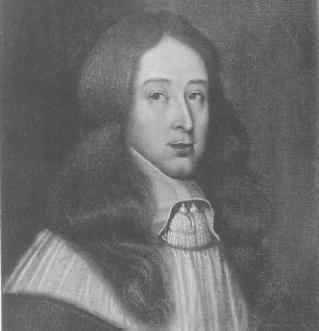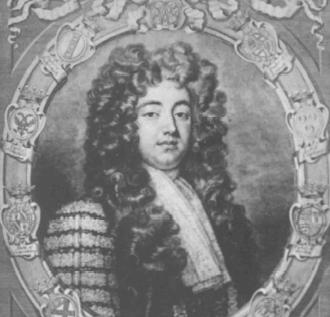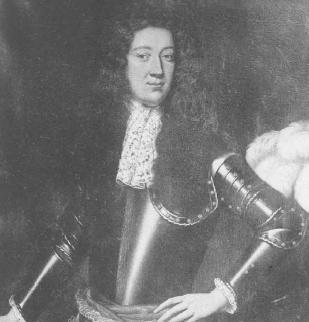Clan Johnston/e consists of at least two distinct groups, those of Annandale in Dumfries and Galloway, and those of Caskieben in Aberdeenshire, as well as Johnston(e)s who cannot easily be classified as either, such as those who took their name from the former name of Perth (St. Johnstoun) or other places called Johnston or Johnstone.A word about pronunciation and spelling: Americans and Canadians tend to pronounce Johnstone as “Johnstoan” and Johnston as “Johnston”, suggesting two different names. In the U.K. generally, the name is pronounced “Johnston”, no matter how it is spelled; native border Scots often pronounce it “Jawnson.” Presently, the Chief of the entire Name spells his name “Johnstone,” and the Head of the House of Johnston of Caskieben spells his name “Johnston.” Actually, either spelling may be used by Annandale or Caskieben clansmen, although the “e” is more common among those of Annandale. The writer has tended to use the “e” in this short history because it is the way the Chief of the entire Clan spells his name, and also because that is the way the writer spells his name.
The derivation of the name Johnstone is Anglo-Saxon and means “John’s settlement.” The first known Johnstone was Gilbert, son of John, who received use of a small parcel of land in southern Annandale from William Bruce, Lord of Annandale, between 1195 and 1214. Gilbert soon was knighted and witnessed various charters as Sir Gilbert de Joneston. Later Johnstone lairds fought the English at the Battle of Solway in 1378 and the Battle of Otterbourne in 1388.
The Johnstones of Annandale were among the most intrepid reivers of the Scottish West March of the Borders. The tartan-clad Gaelic highlander of popular image certainly is not a Johnstone clansman. Yet the Johnstones (Johnston, Johnstoun, Jhonstowne, Joniston, etc.) were very much members of a tribal society. They were also products of a brutal frontier. Centuries of border warfare and scorched-earth campaigns, in which the Scots frequently lost all their possessions to the English, left the borderers disinterested in growing crops. Guerilla warfare evolved into a guerilla existence. The borderers became semi-nomadic, raiding the English and neighboring clans to replenish the cattle and horses which were their chief form of property. The Johnstones were excellent horsemen and, dressed in a metal helmet (steel bonnet) and reinforced leather jacket (jack), with a long lance, cutting sword and set of pistols, a Johnstone clansman was well adapted to his world. A monument at the Devil’s Beeftub, a vast, sinister-looking hollow near the source of the Annan River, records that the Johnstones used the place “to hide cattle stolen in predatory raids.”
Border lairds lived in stark, square stone peel towers, three or four stories tall, surmounted with battlements and built on inaccessible ground. The principal stronghold of the Johnstones was Lochwood Tower, a massive, L-shaped fortress surrounded by forest and marsh. On approaching Lochwood, King James V is said to have remarked that “He who built it must have been a knave in his heart.”
Sir Walter Scott, himself a descendant of border reivers, portrayed the Johnstone clansmen in the Fair Maid of Perth. The language maybe dated, but the idea still comes through:
Do you see yonder five or six men, who are riding so wildly on the other side of the river? These are Annandale men; I know them by the length of their lances, and by the way they hold them. An Annandale man never slopes his spear backwards, but always keeps the point upright, or pointed forward…. If you were in their own glens, they would use you hospitably, and you would have nothing to fear; but now they are on an expedition. All is fish that comes to their net. There are amongst them who would take your life for the value of your gold earrings. Their whole soul is settled in their eyes to see prey, and in their hands to grasp it. They have no ears either to hear lays of music or listen to prayers for mercy.
Elsewhere in the novel, several of the main characters happen upon a Johnstone clansman hawking on burgh land:
Yon fellow, who stops so impudently to look at us, as if he were engaged in the most lawful sport in the world — I guess him, by his trotting hobbler, his rusty head-piece with the cock’s feather, and long two-handed sword, to be the follower of some of the southland lords — men who live so near the Southron that the black jack is never off their backs, and who are as free of their blows as they are light of their fingers.
The borderer’s figure is described as “gaunt and lathy, his visage marked by two or three ill-favoured scars, and the whole man had much the air of one accustomed to say ‘stand and deliver’ to a true man.” When asked his name and what he was doing, the borderer replies:
You want to know my name? — My name is the Devil’s Dick of Hellgarth, well known in Annandale for a gentle Johnstone. I follow the stout Laird of Wamphray, who rides with his kinsman the redoubted Lord of Johnstone, who is banded with the doughty Earl of Douglas; and the Earl and the Lord, and the Laird and I the Esquire, fly our hawks where we find our game and ask no man whose ground we ride over. …And take you this to boot, to keep you in mind that you met the Devil’s Dick, and to teach you another time to beware how you spoil the sport of any one who wears the flying spur on his shoulder.
With these words, the Devil’s Dick unhorses his questioner, places a whinger to his throat and seizes his purse! With the approach of the victim’s companions, the Devil’s Dick makes his exit, as follows:
…Snapping his fingers, and throwing his hand out with an air of defiance, spurred his horse into a neighboring bog, through which he seemed to flutter like a wild-duck, swinging his lure round his head, and whistling to his hawk all the while, though any other horse and rider must have instantly bogged up to the saddle-girths.
The Johnstones rose to prominence and power by assisting the King in crushing the Douglas rebellion in 1455. The Black Douglases virtually controlled southern Scotland and were perceived as a serious threat to the Stewart dynasty. The Johnstones fought the Black Douglases at Arkinholm in Dumfriesshire and participated in the King’s siege of Threave Castle in Kirkudbright. The Douglases were attainted, their estates forfeited, and King James II “of the fiery face” rewarded his supporters, including the Johnstones, with grants of former Douglas lands. Johnstone clansmen soon spread throughout upper Annandale and into Lanarkshire. In 1542 Queen Mary of Guise erected the lands of the Laird of Johnstone into a free barony.
The Johnstones were listed as troublemakers on the West March in the “Roll of the clannis that hes capitanes chieffis and chiftanes quhome on thai depend oftymes againis the willis of thair landislordis alsweill on the bordors as hielands and some speale personis of braches of the saidis clannis” which as appended to a 1597 Act of the Parliament of Scotland “For the quieting and keping in obedience of the disorderit subiectis inhabitantis of the bordors hielands and Ilis.” In 1578 the “nayme of Johnnstounis” appointed a council of twelve arbiters to settle internal disputes, all under the leadership of their “chief and maister” the Laird of Johnstone. The council consisted of Johnstones of Carnsalloch, Craigieburn, Elsieshields, Fairholm, Fingland, Howgill, Lockerbie, Marjoribanks, Millbank, Newton, Poldean and Wamphray. During the sixteenth century, the clan was also organized in numerous gangs, which changed form over time.
During the sixteenth century the Johnstones and the Maxwells competed for primacy in the Scottish West March. Johnstone and Maxwell chiefs each served at various times as Wardens of the Scottish West March. Their respective clans continued a deadly blood feud for almost a century. In late 1593 John, seventh Lord Maxwell, Earl of Morton, sometime collaborator with the Spanish armada and Warden of the Scottish West March, assembled 2,000 armed horsemen and, displaying the King’s banner, invaded the mountainous district of Annandale, land of the Johnstones. Whatever the official reason, Lord Maxwell’s personal intention was once and for all to destroy his family’s ancient enemies and rivals for power in southwestern Scotland.
Sir James Johnstone of Dunskellie, Chief of the Johnstones, received advance warning of the approaching army and realized that his clan would soon have a desperate fight for continued existence. He summoned help from Grahams, Scotts, Carrutherses, Irvings, Elliots and others, and quickly raised a force of perhaps 800. Among those who came to the aid of the clan was the Chief’s eleven-year-old kinsman, Robert Johnstone of Raecleuch. Lord Maxwell had offered his followers a reward for the head or hand of the Laird ofJohnstone, and Sir James in turn offered his followers a reward for the head or hand of Lord Maxwell.
On December 6, 1593 the Maxwell army approached the Johnstone town of Lockerbie near a place called Dryfe Sands. Sir James kept most of his men hidden, but sent a handful of horsemen to provoke the Maxwell vanguard, then retreat. When the vanguard broke ranks inpursuit with loud cries of victory, the main body of Johnstones made a sudden, desperate charge, catching the Maxwells off guard and driving the disorganized vanguard into the main force. The Johnstones then savagely pursued their enemies into the streets of Lockerbie and into the Water of Dryfe, slaughtering some 700 of the Maxwells and slashing others with downward sword strokes which caused gruesome facial wounds known as “Lockerbie licks.”
In the midst of the carnage Lord Maxwell begged for mercy and offered to surrender, but the Johnstones cut off his outstretched arm and slew him. It is said that the Laird of Johnstone affixed the head and right hand of Lord Maxwell to the battlements of Lochwood Tower as bloody trophies of the Johnstones’ overwhelming victory at the Battle of Dryfe Sands.
In 1608 a meeting was arranged for a reconciliation of Sir James Johnstone of Dunskellie and Lord Maxwell, son of the chief who was killed at the Battle of Dryfe Sands. Precautions were taken for each party to bring only one attendant. During the interview, Lord Maxwell suddenly drew a pistol from under his cloak and shot the Johnstone chief in the back with two poisoned bullets, mortally wounding him. After escaping to France, Lord Maxwell was finally apprehended and publicly beheaded in Edinburgh for his “murder under trust” of Sir James Johnstone of Dunskellie.
When King James VI of Scotland succeeded to the throne of England in 1603, the border frontier became the center of a new united kingdom. The King used his new authority to deal with the unruly border clansmen as ruthlessly as his successors dealt with the highland clans a century and a half later. A proclamation of 1605 forbade borderers, “except nobles and gentlemen unsuspected of felony or theft,” from carrying “jacks, spears, lances, swords, daggers, steel caps, hackbuts, pistols, platesleaves, and suchlike.” It also forbade the owning of any horse above the value of 50 shillings sterling or 30 pounds Scots. The government deported or executed the worst of the troublemakers, including many Johnstones. The old border frontier ceased to exist within a few short years.
In 1633 at the coronation of King Charles I in Scotland, James Johnstone, son of Sir James Johnstone of Dunskellie, was created a first lord of Parliament with the designation of Lord Johnstone of Lochwood. In 1643 he became Earl of Hartfell, Lord Johnstone of Lochwood, Moffatdale and Evandale. During the religious wars the Earl joined the Covenanters, but later supported the royalist cause under Montrose. The Covenantor army captured the Earl at Philliphaugh in 1645 and condemned him to death, but later commuted the punishment to a fine of 100,000 pounds Scots. During the Commonwealth, the Earl of Hartfell and his son were imprisoned in Edinburgh, Dumbarton and St. Andrews castles. Upon the Restoration, King Charles II rewarded James, the second Earl of Hartfell, for loyalty with a crown charter to the Earldom of Annandale.

William Johnstone, the second Earl of Annandale, participated in a Jacobite plot as a youth, but eventually regained the favor of King William I and became an Extraordinary Lord of Session, Lord of the Treasury, Lord of the Privy Counsel, Knight of the Thistle, Joint Secretary of State for Scotland, Keeper of the Great Seal, and Privy Counselor. In 1701 the King made him the Marquis of Annandale in recognition of his service.

His oldest surviving son, James, the second Marquis of Annandale, died unmarried in Naples in 1730. The following picture is traditionally said to be of the second Marquis, but may actually be of the first Marquis.

The first Marquis’s posthumous son, George, who was declared an incompetent, was the third Marquis and when he died unmarried in 1792 the titles became dormant.

In 1983, after a lapse of nearly two centuries, the Lord Lyon King of Arms officially recognized Major Percy Wentworth Hope Johnstone of Annandale and of that Ilk, hereditary Keeper of Lochmaben Castle and a descendant of the daughter of the first Marquis of Annandale, as Chief of Clan Johnstone. Upon Major Hope Johnstone’s death later that year, his son Patrick Andrew Wentworth Hope Johnstone succeeded as Chief. In 1985 the House of Lords recognized the Chief’s claim to the long-dormant titles of Earl of Annandale and Hartfell. The Chief resides with his wife, Countess Susan Josephine Ross Hope Johnstone at Raehills on their Annandale estate. They have a son, Lord David Johnstone, and a daughter, Lady Julia Hope Johnstone.
The Johnstons of Caskieben in Aberdeenshire descend from Stephen “the Clerk,” a man of great learning who is claimed to have been a son of the Laird of Johnstone in Annandale, although this claim is disputed among historians. The head of the Caskieben branch became a Baronet of Nova Scotia, and his descendant, an American citizen, is the current head of the branch.
Jeffrey M. Johnstone, FSA Scot.
References
Fraser, George MacDonald. The Steel Bonnets. London: Pan Books, 1974.
Fraser, Sir William. The Annandale Family Book of the Johnstones, Earls and Marquises of Annandale. 2 vols. Edinburgh, n.p., 1894.
___________________. The Book of Carlaverock. 2 vols. Edinburgh, n.p., 1873.
Great Britain. Edinburgh. H.M. General Register House. Register of the Privy Council of Scotland, 1877.
Great Britain. Historical Manuscripts Commission. The Manuscripts of J.J. Hope Johnstone of Annandale. London: Eyre and Spottiswoode, 1897.
Honey, Russell C. The “Gentle” Johnston/es, The Story of the Johnston/e Family. Ameliasburgh Township: Fallsbrook Publishing, Inc., 1996.
Johnstone, C.L. History of the Johnstones. Edinburgh: W.& A.K. Johnston, [1909].
Kermack, W.R. The Scottish Borders (with Galloway) to 1603. Edinburgh: Johnston & Bacon, 1967.
Mackie, J.D. A History of Scotland. 2nd ed. Harmondsworth, Middlesex: Penguin Books Ltd., 1985.
Merriman, Marcus. “The Platte of Castlemilk, 1547,” Dumfriesshire and Galloway Natural History & Antiquarian Society – Transactions, Third Series, Vol. XLIV, pp. 175-181, 1967.
Marsden, John. The Illustrated Border Ballads. Austin: University of Texas Press, 1990.
Maxwell-Irving, Alastair M.T. “Lochwood Castle – A Prelininary Site Survey,”
Dumfriesshire and Galloway Natural History & Antiquarian Society – Transactions, Third Series, Vol. XLV, pp. 184-199, 1968.
____________________________. “Lochwood Castle II – Exploratory Excavations and Observations on Lochwood & Its Lairds” (unpublished), 1977.
____________________________. “Lochwood Castle – A Resume” Dumfriesshire and Galloway Natural History & Antiquarian Society – Transactions, Third Series, Vol. LXV, pp. 93-99, 1990.
____________________________. The Border Towers of Scotland: Their History and Architecture – The West March. Blairlogie, Stirlingshire: A.M.T. Maxwell-Irving, 2000.
McDowall, William. History of the Burgh of Dumfries. 4th ed. Dumfries: T.C. Farries & Co. Limited, [1985].
Pitcairn, Robert. Criminal Trials in Scotland. 3 vols. Edinburgh, n.p., 1833.
Reid, R.C. “Lochwood Tower,” Dumfriesshire and Galloway Natural History & Antiquarian Society – Transactions, Third Series, Vol. XIII, pp. 187-193, 1925.
Salter, Mike. Discovering Scottish Castles. Aylbury, Bucks: Shire Publications Ltd., 1985.
Scott, Sir Walter. Minstrelsy of the Scottish Border, in The Complete Works of Sir Walter Scott. Vol. I. 7 vols. New York: Conner and Cooke, 1833.
_________________. The Border Antiquities of England and Scotland. 2 vols. London: Longman, Hurst, Rees, Orme and Brown; J. Murray; John Greig; Constable and Co., 1814, 1817.
Shannon, Robert A. “The Origin of the Johnston Family in Dumfriesshire” (unpublished), 1985. Dumfriesshire. Personal letters.
Tabraham, Christopher J. “The Scottish Medieval Tower House as Lordly Residence in the Light of Recent Excavation,” Proceedings of the Society of Antiquaries of Scotland, Vol. 118, p. 267, 1988.
Thomson, T., ed. Acts of the Parliaments of Scotland. Vol. III. Edinburgh: n.p., 1814.
Turnbull, W. Robertson. History of Moffat: with Frequent Notices of Moffatdale and Annandale. Edinburgh: W.P. Nimmo, 1871.
Warner, Gerald. Homelands of the Clans. London: Collins, 1980.


